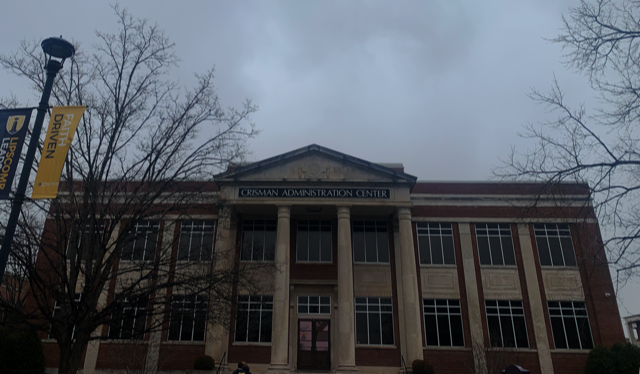Washington, D.C., lawmakers are scuffling over solutions to student debt and the rising cost of higher education, and any resultant policies will hit home for Lipscomb students who take out more than $11 million in student loans each school year.
Lipscomb’s financial aid office is awaiting changes on the federal level and advocating on behalf of students, according to school officials.
Tiffany Summers, financial aid director, and Amanda Martin, director of the Office of Neighborhood, Community and Government Relations, are working within college associations to obtain information surrounding upcoming policy changes.
“I would say there’s a lot that we’re watching right now, certainly higher education was an important part of the administration’s platform,” Martin said.
“There can definitely be a difference between what is on the platform and what actually gets done when somebody gets in office,” she said.
Platform issues are basically “pie-in-the-sky” campaign proposals that are altered by legislative reality.
One of the hot-button issues surrounding Biden’s higher ed plan is student debt forgiveness. Opponents argue forgiveness would disproportionately benefit high-income individuals, while supporters maintain Biden could do more.
“There’s definitely a lot of debate nationally around student loan debt. …So one of the pillars of Biden’s higher education plan was that he wanted to forgive $10,000 worth of student loan debt for everyone,” Summers said.
“It’s certainly unclear what any actual student loan action is going to look like, there are some that argue Biden should by executive order forgive $50,000 in student debt for everyone or forgive all student loan debt which would cost somewhere around $1.5 trillion,” she said.
Senate Majority Leader Chuck Schumer (D-New York) and Sen. Elizabeth Warren (D-Massachusetts) held a February press conference calling on Biden to forgive $50,000 per borrower via executive order, but Biden maintains his position on $10,000, awaiting congressional approval.
Yet student loan action isn’t the only approach the administration is taking toward increasing higher ed accessibility.
“There are definitely some things that we are excited about from the new administration, one of which is doubling the Pell Grant,” Martin said.“ Over the years, the buying power of the Pell Grant for the overall cost of schools has really gone down as inflation happens, but we haven’t really increased the Pell Grant to keep up.”
During the 2018-2019 school year, 1,701 Lipscomb students were determined to have financial needs, yet only 736 received the Pell Grant.
Pell grants, of course, are directly “awarded through participating institutions to students with financial need who have not received their first bachelor’s degree or who are enrolled in certain post-baccalaureate programs that lead to teacher certification or licensure,” according to the United States Department of Education web site.
“Being able to put more money in the Pell Grant would really allow students to be able to have a choice about which institution is the best fit for them,” Martin said.
Summers and Martin said they see institutional “fit” as a big factor in Lipscomb maintaining a competitive edge as Biden seeks to decrease the cost of public universities.
“The biggest lesson that we’re adapting to is what the needs of the students are,” Summers said. “We want to continue to provide an educational experience that prepares students to enter the workforce, and provides the kind of experiences that students want to have while they’re in college.
“We just want to make sure that students have the option to choose whatever is the best fit for them.”
For students currently struggling with student debt or college affordability, Summers recommends taking advantage of already-passed legislation.
Weeks into his term, President Biden has signed several executive orders aimed at providing education-based COVID relief. Including, an extension of the Trump administration’s pause on federal student loan collection, which Summers said is the perfect opportunity for students to get ahead of debt.
“My advice is if at all possible, to make payments on that principal amount,” she said. “It’s just going to save you down the road.”

